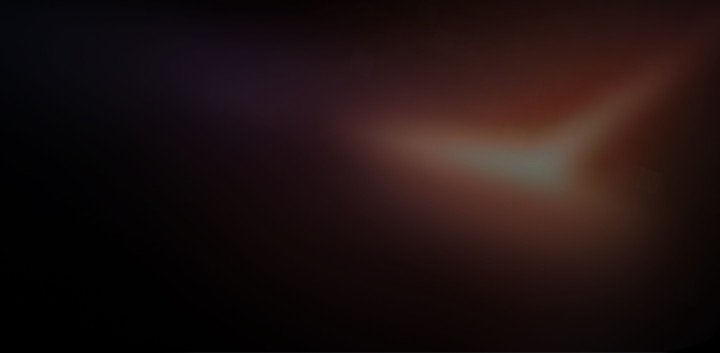How to Optimise Image Galleries for Google Search (So Your Portfolio Actually Brings Clients)
How to make your design portfolio discoverable — without killing the aesthetics
Your gallery looks stunning. Full-screen hero shots, silky scroll, perfect spacing. But here’s the blunt truth:
Google can’t “see” beauty.
It parses HTML, reads text, and follows links. If your gallery is a javascript-driven slideshow with background images and no descriptive copy — Google treats it like invisible decoration. That means fewer impressions, fewer clicks, fewer inquiries.
This guide gives you a practical, step-by-step system to turn your image gallery into an SEO asset: crawlable, fast, and built to convert. No hand-waving. No jargon you don’t need. Just what works for architects and design studios.
Quick overview — what this will cover
- Why image SEO matters (the business case)
- The technical foundations you must fix now
- Copy + metadata that actually helps your ranking
- Performance best practices (speed, lazy loading, responsive images)
- Advanced boosts: sitemaps, schema, backlinks, and sharing
- Real-world checklist + tools you can use today

1. The business case: why image SEO matters for studios
Your portfolio isn’t art for art’s sake — it’s the top of your sales funnel.
- Google Image Search drives high-intent discovery for visual queries (e.g., “mid-century villa façade,” “open-plan kitchen island with skylight”).
- Images that rank lift the visibility of the page they sit on — which means more qualified site visits.
- A single well-optimized project page can generate leads for years — no ad spend required.
- Press pickups and social pins happen to sharable images; they create backlinks and referral traffic.
Put simply: each image is a mini-asset. Treat it like a potential lead source, not just decoration.
Quick fact:
Pages with well-described images and contextual text have higher relevance signals and better chance to rank in both image and web search.
2. The brutal technical truth — what breaks image discoverability
If any of these describe your gallery, fix them now:
- Images used as CSS background or injected purely by JavaScript (not in the DOM as
<img>): Google may never index them. - Missing or generic alt text (
alt="image"): you wasted the primary semantic signal for that image. - Non-descriptive filenames like
IMG_4983.jpg: you left ranking juice on the table. - Gigantic, uncompressed files: slow pages = poor rankings and lost visitors.
- Lazy-loading everything (including hero images) and not exposing them in initial HTML: indexing gaps.
3. Start with <img> tags — not background images
Rule #1: Put images in the page source as <img> elements. If it’s not in the HTML, Google treats it as optional.
Good:
<img src="/images/contemporary-lake-house-denver.webp"
alt="Contemporary lake house in Denver with timber cladding and floor-to-ceiling glazing by Studio X"
width="1600" height="900"
loading="eager"
srcset="/images/…-400.webp 400w, /images/…-800.webp 800w, /images/…-1600.webp 1600w"
sizes="(max-width: 768px) 100vw, 50vw">
Bad:
.project-hero { background-image: url('/images/IMG_4983.jpg'); }
Why: <img> elements expose alt text, file name, and srcset metadata to crawlers. Background images are presentation-only and often invisible to bots.
Action:
Audit top 10 project pages. Replace CSS backgrounds for key visuals with<img>tags in HTML.
4. Write alt text like a smart human (and stop stuffing)
Alt text is not a place for keyword spam — it’s the primary signal that tells Google what the image is.
Good alt text formula:[Project type] + [key design element] + [location] + [firm name]
Example: alt="Minimalist glass cabin with mountain views in Aspen by Studio Eleven Architecture"
Rules:
- Keep alt text concise — ~80–125 characters.
- Be descriptive and natural; include 1–2 relevant keywords if they fit naturally.
- Don’t use “image of” or “photo of.” Google already knows it’s an image.
- Don’t copy the same alt across dozens of images — make them unique.
Action:
For your five best projects, write new alt text for every image following that formula.
5. Filenames are tiny URLs — name them for search
Filenames are small but meaningful ranking signals. Use hyphenated, readable names.
Bad: IMG_9822_FINAL_v3.png
Good: contemporary-lake-house-denver-exterior.webp
Action:
Batch-rename images before upload. Use consistent naming:project-location-feature.webp.
6. Surround images with descriptive context — captions, intros, and stories
Images alone don’t explain intent. Google and humans both need context.
- Add a project intro (150–300 words) above the gallery describing the brief, client, location, material palette, and outcome.
- Add captions under key images — captions are read more than body copy and give Google extra context.
- Use H2s like “Lake House — Design brief” or “Materials & Strategies” to help structure content for searchers and crawlers.
Example caption:
“The open-plan kitchen integrates reclaimed wood, matte black steel, and large skylights to connect indoors and outdoors.”
Action:
Edit three project pages to add intros and captions; measure time on page after change.
7. Image sizes, formats, and responsive srcset
Modern image strategy:
- Use WebP where possible (great compression + quality). Fallback to JPEG if necessary.
- Provide multiple sizes with
srcsetandsizesso browsers load the smallest adequate file. - Set width/height attributes to prevent layout shift (good for Core Web Vitals).
- Compress images (Squoosh, TinyPNG) while keeping visual quality.
Action:
Re-export hero image at 1600px (for desktop) and 800/400 for smaller breakpoints. Serve viasrcset.
8. Lazy loading — use it, but do it smart
Lazy loading is mandatory for heavy galleries — but it must be intelligent.
- Do lazy-load images below the fold (use
loading="lazy"for offscreen images). - Do not lazy-load hero or above-the-fold primary images — they must be in the initial render so crawlers and users see them immediately (
loading="eager"or omit loading attribute). - For JS-based lazy loading, ensure images are still rendered in the DOM on initial HTML or use SSR so crawlers can index.
Action:
Implement nativeloading="lazy"on secondary images and ensure the first two hero images are not lazy-loaded.
9. Build and submit an image sitemap
Even with perfect markup, deeply nested images may be missed. An image sitemap tells Google:
- Where your images live
- What page they belong to
- Optional metadata: caption, geo location, license, and title
How to do it:
- WordPress: Yoast adds image data to sitemaps.
- Webflow: auto-generates sitemaps; confirm image URLs are included.
- Manual/advanced: Use Screaming Frog to export images and build sitemap entries.
Submit the sitemap in Google Search Console → Sitemaps.
Action:
Create/confirm an image sitemap and submit it today.
10. Add structured data for projects and images
Schema helps Google understand relationships. Use:
ImageObjectfor image-specific metadata (caption, author, license, date).ProjectorCreativeWorkschema for a project page (name, description, image array, location, architect).
This can surface:
- Rich snippets
- Better image preview cards
- Enhanced context in SERPs
If you’re not coding: use Google’s Structured Data Markup Helper or a plugin (WordPress: Schema Pro, RankMath).
Action:
AddImageObjectmarkup for 5 portfolio pages.
11. Make sharing and linking easy (backlinks amplify image SEO)
Images that are widely shared and linked are stronger ranking signals.
Tactics:
- Pitch projects to industry sites (Dezeen, ArchDaily) with optimized images and captions.
- Create Pinterest boards with SEO-friendly descriptions and image alt text.
- Offer a downloadable press pack with high-res images and a one-page brief; gate it behind email capture if you want leads.
- Encourage suppliers or collaborators to link back to your project page.
Action:
Create a press email template and pitch 3 design outlets per quarter.
12. Practical gallery architecture — a recommended structure
For each project page, aim for:
- H1: Project title (include phrase + location)
- Short intro (150–300 words with keywords naturally)
- Hero
<img>(not lazy-loaded) + 1–2 above-the-fold images - Gallery of 8–12 images as
<img>withsrcsetand unique alt text - Captions for 3-5 standout images
- Project details section (client, scope, materials) — structured with H2/H3
- CTA: “Book a consultation” or “View related projects”
- Internal links to service pages and related blogs
- Image
ImageObjectschema and image sitemap entry
This structure balances UX and SEO while keeping the design crisp.
13. What a fully optimized project page looks like (before vs after)
Before: slider with background images, no alt text, huge files, no captions, slow LCP.
After: hero <img> with WebP srcset, 8–12 images in <img> tags, unique alt text, intro and captions, schema markup, image sitemap submitted, page loads in <2s.
Guess which one ranks and drives inquiries.
14. Tools & quick workflow (what we use)
- Squoosh / TinyPNG — compress images before upload.
- ImageOptim / ShortPixel — automated server-side compression for WordPress.
- Google PageSpeed Insights — measure LCP / CLS / FID.
- Google Search Console — monitor image impressions & indexing.
- Screaming Frog — crawl site to extract images & alt text gaps.
- Yoast / RankMath — image sitemap + schema helpers (WP).
- Webflow — ensures
<img>control and autosrcset. - Schema Markup Helper — generate JSON-LD for
ImageObject.
15. Common mistakes and how to fix them (quick fixes)
- Everything is a background image → Replace primary visuals with
<img>tags. - Alt text is “image” or blank → Write specific alts for top 10 images.
- No captions or project copy → Add 150–300 word intro + 3 captions.
- Huge images hurting speed → Re-export compressed WebP with
srcset. - All images lazy-loaded → Exempt the top 1–2 hero shots.
- No image sitemap → Generate and submit one.
16. The ROI question — what to expect and timelines
Image SEO compounds. Typical timeline:
- 0–1 month: Clean up hero images, add alt texts, rename files, submit sitemap.
- 1–3 months: Google starts indexing more images; impressions increase.
- 3–6 months: Increased image and page clicks, better time-on-page.
- 6–12 months: Press pickups, backlinks, sustained organic project inquiries.
A single page that goes from invisible to top-image results can produce multiple qualified leads each month — the work pays for itself quickly.
17. TL;DR Image SEO checklist for design studios
- Use
<img>tags (not background images) for portfolio visuals. - Write unique, descriptive alt text (80–125 chars).
- Rename files to descriptive, hyphenated names.
- Use WebP +
srcsetfor responsive images. - Lazy-load below-the-fold images; keep hero images eager.
- Add project intro and captions for context.
- Create & submit an image sitemap.
- Add
ImageObject/Projectschema. - Promote images to press and social for backlinks.
- Monitor results via Google Search Console.
Final word — beauty must be findable
Designers create desire with images. But desire only converts when people can find your work. Treat each image like a micro-asset: descriptive, fast, and context-rich. Follow this system and your galleries stop being passive decoration — they become discoverable, rankable, and profitable.
If you want a hands-on audit of your gallery (we’ll show you the exact images that are hurting you and the quick fixes to get them indexed), book Adswom’s Free SEO Visibility Diagnostic — built for architecture and design firms. No fluff. Real fixes.
FAQ — quick answers
Q1: Best image format for SEO?
Use WebP where supported; fallback to compressed JPEG. Avoid large PNGs unless needed.
Q2: How many images per project?
Quality > quantity. 8–12 photos is ideal. Ensure each has meaningful alt text and at least 3 captions.
Q3: Do sliders hurt SEO?
Only if they hide images behind JavaScript without <img> tags. Use accessible, crawlable elements.
Q4: Use CDN?
Yes. CDNs speed global delivery and improve Core Web Vitals.
Q5: How to measure image SEO performance?
Google Search Console → Performance → choose “Image” as search type. Monitor impressions, clicks, and indexed images.
Writing team:

Les't communicate.
Recent Articles
 The Real Cost of Generic SEO for High-End Architecture and Interior Design Studios
The Real Cost of Generic SEO for High-End Architecture and Interior Design Studios
 Why Generalist SEO Fails Designers — And What to Do Instead
Why Generalist SEO Fails Designers — And What to Do Instead
 What to Look for in an SEO Agency: A Strategic Guide for Architects and Design Firms
What to Look for in an SEO Agency: A Strategic Guide for Architects and Design Firms

